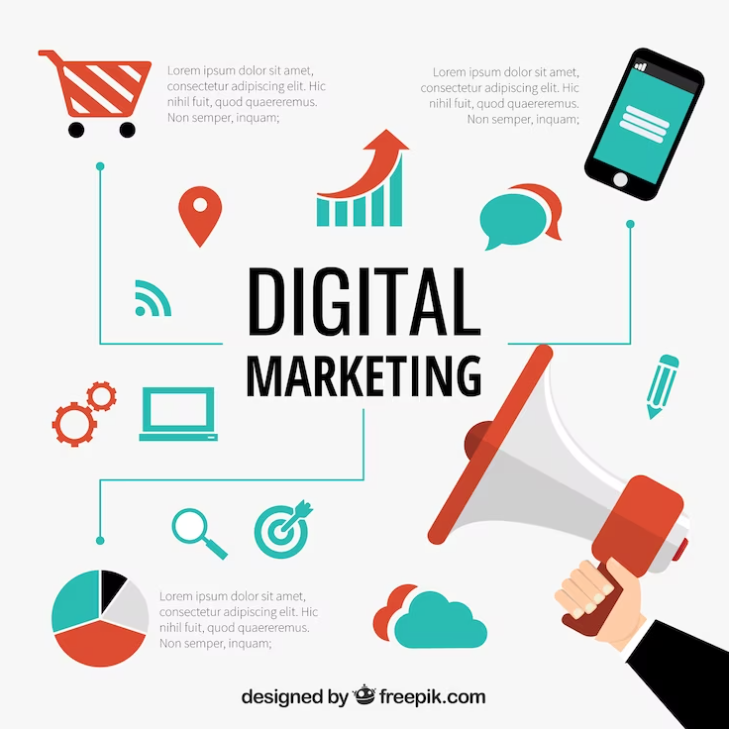Digital marketing is a crucial aspect of any business today, whether big or small. With the world shifting its focus towards the digital space, the need for digital marketing has become essential for any business to grow and succeed. In this ultimate guide to digital marketing, we will take a comprehensive look at what digital marketing is, its importance, the different channels of digital marketing, and how you can create a successful digital marketing strategy for your business.
Chapter 1: What is Digital Marketing?
Digital marketing refers to the practice of promoting and advertising products, services, or businesses through digital channels such as search engines, social media, email, websites, and mobile apps. In contrast to traditional marketing methods, digital marketing is conducted online, making it cost-effective, trackable, and interactive. Some of the most common channels used for digital marketing include search engine optimization (SEO), search engine marketing (SEM), social media marketing, email marketing, and content marketing.
Chapter 2: Why is Digital Marketing Important?
The shift towards digital marketing has been driven by the increasing use of digital devices and the internet. Consumers are now more connected than ever before, and businesses must have a strong online presence to reach them effectively. Digital marketing offers several benefits, including:
- Cost-effective: Digital marketing is a cost-effective alternative to traditional marketing methods. With digital marketing, you can target your audience at a lower cost, reducing your overall marketing budget.
- Increased Reach: With digital marketing, you can reach a wider audience than traditional marketing methods. Through digital channels, you can target people across the world, enabling you to expand your reach and connect with new customers.
- Better Targeting: Digital marketing provides better targeting capabilities, allowing you to reach people who are more likely to be interested in your products or services. This helps you maximize your return on investment (ROI) and achieve better conversion rates.
- Measurable Results: Digital marketing offers measurable results, enabling you to track the effectiveness of your campaigns and make data-driven decisions that can help you improve your marketing strategy.
Chapter 3: The Different Channels of Digital Marketing
- Search Engine Optimization (SEO): SEO is the practice of optimizing your website to rank higher on search engines like Google. It involves several techniques, including keyword research, on-page optimization, and link building.
- Search Engine Marketing (SEM): SEM refers to paid advertising on search engines like Google. This involves creating ads and bidding on keywords to drive traffic to your website.
- Social Media Marketing: Social media marketing involves promoting your business on social media platforms like Facebook, Instagram, Twitter, and LinkedIn. This can include creating content, running ads, and engaging with your audience.
- Email Marketing: Email marketing involves sending promotional emails to your subscribers. This can include newsletters, promotional offers, and follow-up emails.
- Content Marketing: Content marketing involves creating and sharing valuable content to attract and retain customers. This can include blog posts, videos, infographics, and social media posts.
Chapter 4: How to Create a Successful Digital Marketing Strategy
Creating a successful digital marketing strategy requires careful planning and execution. Here are some steps you can follow:
- Define your goals: The first step is to define your digital marketing goals. What do you want to achieve? Do you want to increase traffic to your website, generate leads, or increase sales? Your goals should be specific, measurable, achievable, relevant, and time-bound (SMART).
- Identify your target audience: Who are you trying to reach? Identify your target audience based on demographics, interests, and behaviors. This will help you create content that resonates with your audience.
- Choose your channels: Choose the digital marketing channels that are most relevant to your audience and goals. Consider your budget, resources
- Create a content strategy: Your digital marketing strategy should include a content strategy that outlines the type of content you will create, how often you will create it, and where you will publish it. Your content should be relevant, informative, and engaging to your target audience.
- Set a budget: Determine your budget for each channel and campaign, and allocate your resources accordingly. Consider the cost of running ads, creating content, and hiring external agencies or freelancers.
- Track and measure your results: Set up analytics tools to track your results and measure the success of your campaigns. This will help you make data-driven decisions and optimize your strategy for better results.
Conclusion:
Digital marketing is an essential aspect of any modern business. By understanding the different channels of digital marketing and creating a successful digital marketing strategy, you can reach your target audience and achieve your business goals. Remember to define your goals, identify your target audience, choose your channels, create a content strategy, set a budget, and track and measure your results. With these steps, you can create a successful digital marketing campaign that helps your business grow and succeed.
